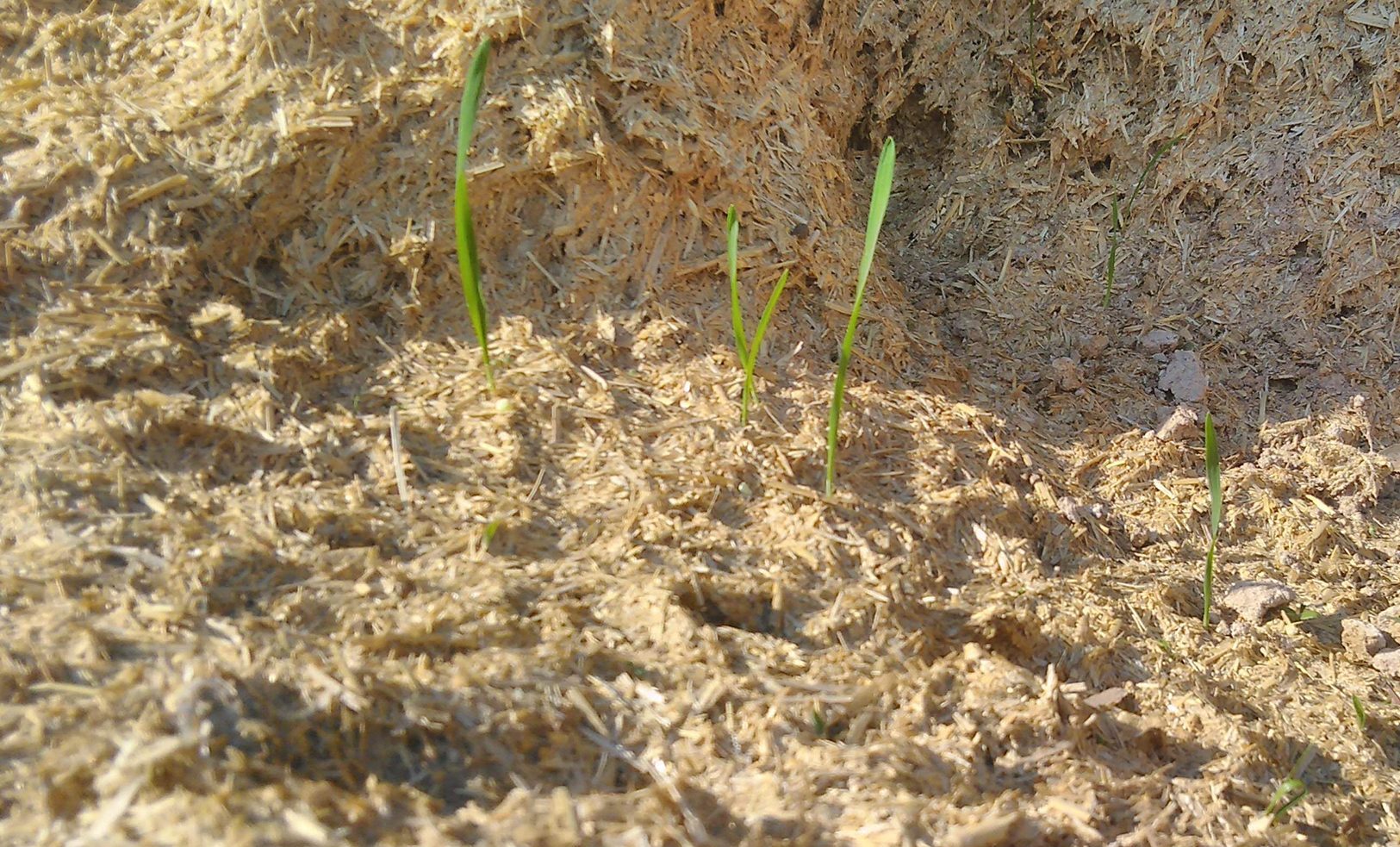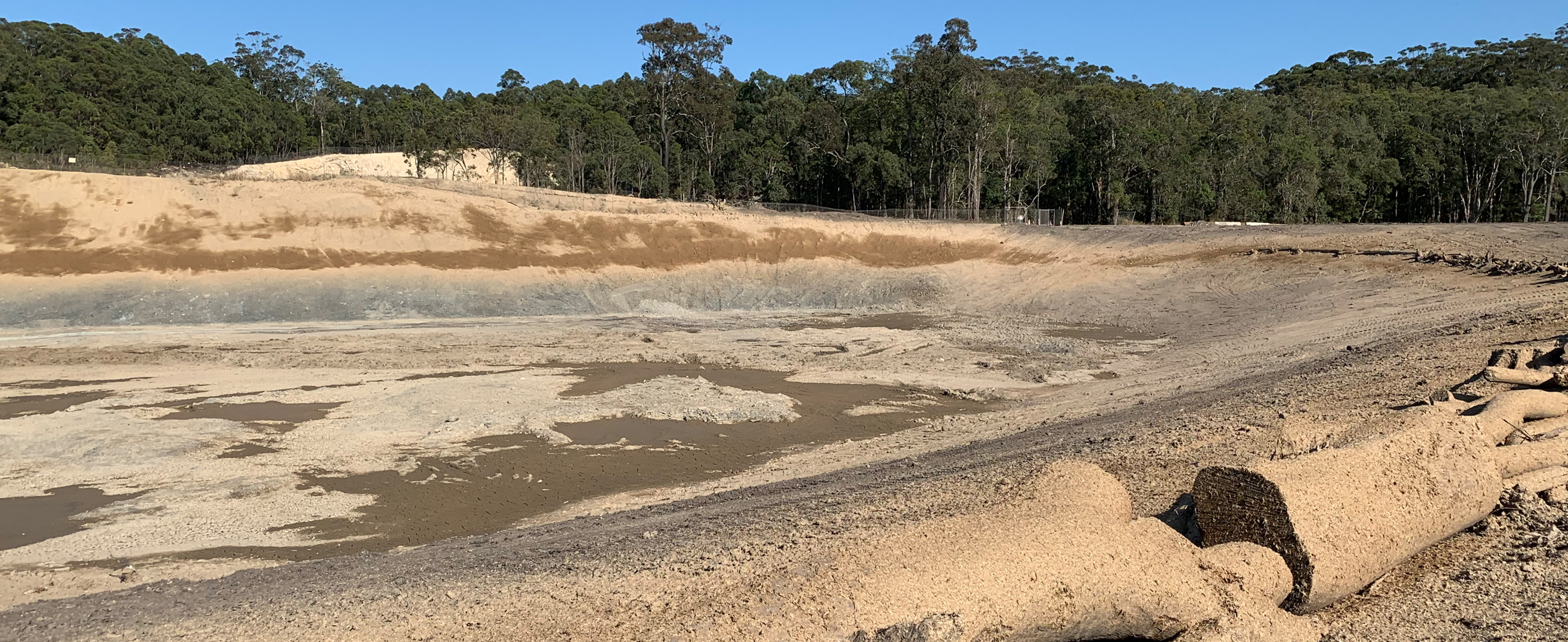
Once a mining site or infrastructure project is complete, re-establishing the vegetation on the desolate landscape left behind can be challenging to say the least.
We put this down to the fact that earthworks destroy soil health and the soil microbiome, and that this disturbance and de-vegetation process degrades soil quality and structure and depletes soil of carbon and other critical nutrients.
Our scientists have examined many post-mining and construction projects around Australia and some of the key constraints that they’ve found include: soil that is low in carbon, sodic (high in sodium) and highly dispersive, hydrophobic, minerally depleted and with poor biological diversity. These issues can impact negatively on plant productivity and self-sustainability.
We have been able to solve and overcome these pre-existing challenges by leveraging the synergy between plants and the soil microbiome. A major key to rebuilding and sustaining soil health when it’s been depleted and degraded by man-made processes comes down to tiny micro-organisms called beneficial microbes.
Beneficial Microbes have the power to help overcome these hurdles quickly by:
- Building healthy carbon-rich soil
- Increasing the soil’s capacity to retain water
- Improving water filtration rates
- Cycling and releasing locked-up nutrients in the soil (microbes can help these dormant nutrients become bioavailable to plant life)
- Balancing pH and calcium-magnesium ratios; and
- Ultimately improving soil health, soil structure and soil quality for sustainable plant growth.
How do you get these microbes to work their magic? It all starts with clever soil science that’s holistic in its approach. But let’s park that for a moment. Firstly, let’s discuss conventional revegetation methods that people have relied on in the past.
What people usually do (which doesn’t work so well on mining or infrastructure sites)
Typically, when someone wants to try to ‘fix’ dead soil and get things growing again, they’ll start by adding high rates of soil conditioners like gypsum and/or lime and soluble fertiliser. This is also generally what a conventional farmer would do.
Your typical agronomist has been trained to look at soil through a farmer’s lens with a view to growing agricultural crops or pasture for animals. The traditional approach is to chemically correct the soil so that plants can establish using multiple units of soluble fertiliser (and usually in the form of NPK) – but beneficial soil biology is generally never considered. This is how agronomists have been taught to solve the problem at university. There’s nothing wrong in principle with this approach when you’re trying to farm the land where the soil hasn’t been significantly disturbed, but that’s not what we’re trying to do here.
When revegetating Australian sites ravaged by mining or infrastructure, we’re dealing with highly disturbed, structurally-damaged, out-of-balance soils and we need to take a regenerative approach. This is a very different soil type that needs special attention to establish vegetation. The idea is to plant a native grass species to provide a long-term, self-sustaining outcome.

The problem is that application of heavy rates of gypsum and lime when combined with dolomite and compost (at rates above 10+ ton of combined soil conditioners) can be very expensive and can be difficult to implement.
Take Gypsum for example which is commonly used to correct sodicity in sodic soils. If you don’t effectively flush it through the soil profile with large volumes of water, you generally don’t get the desired effect of breaking the sodium from the clay particle. By missing this critical step, you can create further challenges with nutrient lock-up and soil compaction.
Added to that is the small matter of compost. If your compost is not fully mature, you’re introducing unstable organic matter that still needs to break down further to become stable and useful. This creates a situation where you can burn more carbon initially, which in turn creates a nitrogen drawdown issue that’s extremely difficult to manage – and can be detrimental to plants.
Adding a soluble fertiliser to the mix means that a large percentage of it will potentially simply wash past the plant’s root system and leach into the environment. This creates a costly high-maintenance scenario where the fertiliser needs to be reapplied again and again – potentially resulting in a non-self-sustaining outcome.
Traditional wisdom says that when you apply soluble fertiliser, there are plenty of nutrients available (though usually only NPK) – and by default microbes are not needed. But what happens when these soluble nutrients bypass the root system altogether without being taken up and doing their job? Not only are these nutrients potentially wasted, but they can then become an environmental contamination issue. As a self-sustaining option, this is where incorporation of beneficial microbes in the system makes sense.
The power of beneficial microbes
These microbes have the ability to help balance soil quickly. Briefly, here’s how: beneficial microbes are living organisms that survive by nutrient cycling and thrive by creating a symbiotic relationship between the plant and themselves – forming the plant-associated microbiome. The plant provides carbon sugars (carbohydrates derived via photosynthesis) to the microbes, and the microbes in turn supply nutrients back to the plant in return for those carbon sugars. This goes on and on in a dynamic and beautifully balanced partnership.
Without this symbiotic relationship, it’s very challenging to establish a long term, self-sustaining outcome that doesn’t require a constant and costly maintenance program involving the reapplication of fertiliser.
Stay tuned for the next instalment in our blog series about beneficial microbes where we explain how to encourage microbial activity in your soil.